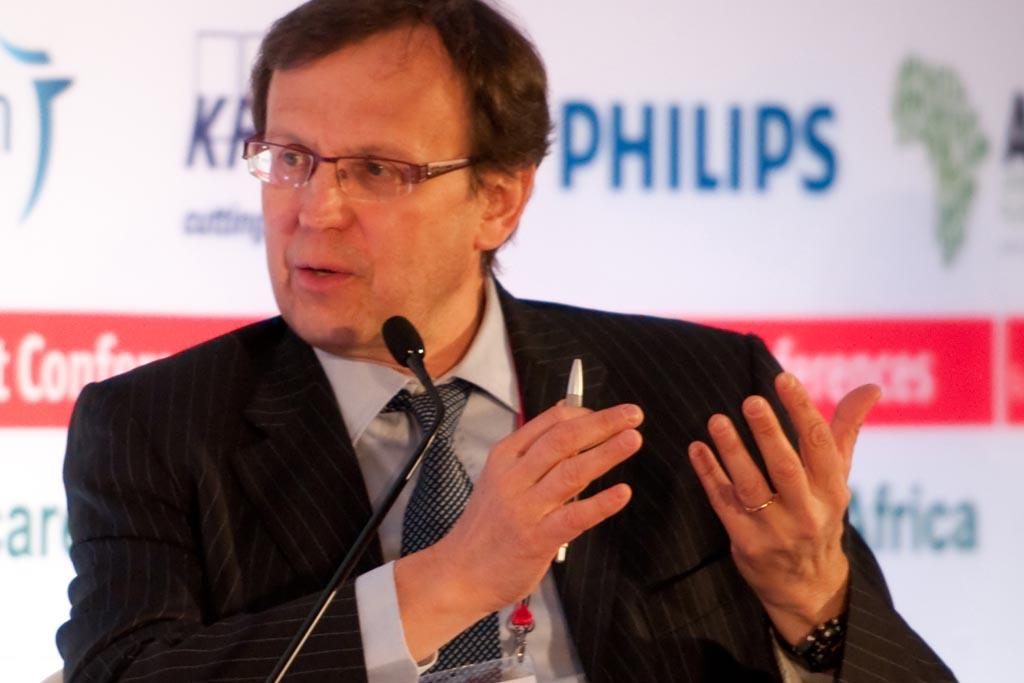Q&A with WHO’s TB chief: ‘We have to be bold’
Mario Raviglione
WASHINGTON, DC—Mario Raviglione has been the director of the World Health Organization’s Stop TB Department since 2003. He spoke with John Donnelly about his frustrations with detecting cases of multidrug-resistant TB as well as the slowness in the use of the GeneXpert machine, which can detect drug-resistant TB in two hours, compared to two months from older tests.
Q: With the International AIDS conference approaching, what should people know about TB and HIV-TB co-infection?
A: There has been much progress in addressing HIV-TB co-infection. Still, though, we are not there yet. Some countries are offering TB services to up to 90 percent of people who are co-infected with HIV. But other countries are reaching well under 50 percent.
Q: What are you impatient about?
A: First, let me say something about progress because we estimate we’ve saved more than 7 million lives going back to 1995. That is major. What frustrates us is that we’re estimating 8 to 9 million cases of TB a year, but we’re detecting only 6 million of them. So there are about 3 million which we know nothing about. That is a major frustration. The second frustration is linked with MDR-TB (multi-drug resistant TB). We are progressing so slowly in the country response for MDR-TB. We are treating roughly 5 percent of all cases.
Q: What about the cases that have been called TDR, or totally drug-resistant TB? Is there a scientific basis for that term?
A: What was called TDR by Mumbai doctors was a very severe form of XDR-TB (extensively drug-resistant TB) that probably has acquired resistance to other drugs, the last few drugs we had available. The WHO, as a policymaker body, cannot formally say, ‘Yes it is totally drug resistant’ as the test for second-line drugs is not always reliable. So we have to say it’s XDR-TB.
However, when people start identifying these cases, you really have to be concerned. It means it’s very likely we have a severe form of XDR-TB that has acquired resistance, perhaps, to all the drugs.
Q: Do you worry about a doomsday scenario in which drug-resistant TB starts multiplying around the world?
A: In a normal situation, without a lot of HIV, the evolution of this epidemic is relatively slow, like in Mumbai, and then you take control measures. What is really worrisome is when you have TB, especially those forms of XDR-TB, spread in a community where there’s a lot of HIV. If it spreads there, then you telescope an epidemic. It could go very, very fast. It will spread at a speed 10 times, 20 times higher than how it would spread in other populations. The real fear is the mixing of MDR, XDR, and the HIV epidemic. If they coalesce in greater numbers, then we are in real trouble.
Q: What are the answers, then?
A: Research is ultimately the way out. The big difference will come with a vaccine. That would take care of the epidemic. The situation we have now in TB research is much better than 10 years ago when we had nothing in pipelines. With research in diagnostics, we produced the GeneXpert machine, which gives us very quick diagnosis of MDR-TB.
Q: How is the rollout going for GeneXpert?
A: It’s frustrating. We have had to insist for more than a year for agencies and NGOs to start using it, but many have been reluctant. If the HIV community had a new tool like that, no one on earth would be debating it for one year. I cannot believe people are hesitating about this tool.
Q: Why the hesitation?
A: Some say it’s the cost. Others say you need computers. And others say you have to train people on the computers. But what I think is that nothing is perfect in life, so let’s push as much as we can.
Q: Do you see reluctance in the TB community to use other new tools?
A: The same thing in the future could happen when we have new types of drugs. We at the WHO are the first ones to be cautious. You have to have some sort of protection established for the new drugs to make sure they will be used in a proper way. The concern here is about how fast those in the community will adapt and start using new drugs, using them with proper safeguards.
We have to be bold. We have to make sure we do everything possible to ensure drugs are not misused, but at the same time we have to do all we can to provide new access to the new drugs when they come.
More from GlobalPost: AIDS: A Turning Point
